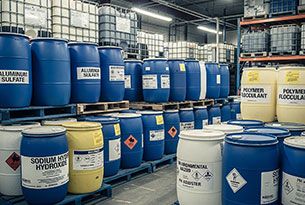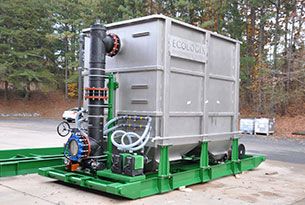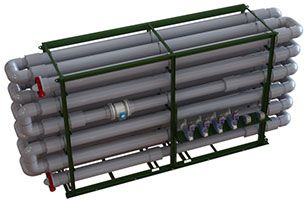1. Introduction to pH
The term pH, meaning "potential of hydrogen," was introduced by Danish chemist Søren Sørensen in 1909 to quantify a solution's acidity or alkalinity. It is defined as the negative logarithm of the hydrogen ion concentration ([H+]) in moles per liter:
The pH scale ranges from 0 to 14, where 7 is neutral, below 7 is acidic, and above 7 is alkaline. The "p" derives from "potenz" (German/Danish for power), and "H" refers to hydrogen. In wastewater treatment, pH is critical as it affects chemical reactions, biological processes, and the solubility of heavy metals and pollutants.
2. Purpose of pH Adjustment in Wastewater Treatment
Adjusting pH optimizes coagulation, flocculation, metal precipitation, and biological treatment. Heavy metals form insoluble compounds at specific pH ranges, enabling precipitation. pH adjustment ensures regulatory compliance, prevents corrosion, and enhances microbial activity (optimal at pH 6.5 - 8.5).
3. Chemicals Used to Raise pH
Alkaline chemicals neutralize hydrogen ions to raise pH. Common chemicals include:
- Sodium Hydroxide (NaOH): A strong base releasing hydroxide ions
(OH-): NaOH → Na+ + OH-
- Calcium Hydroxide (Ca(OH)2): Slaked lime, cost-effective, provides
two hydroxide ions: Ca(OH)2 → Ca2+ + 2OH-
- Sodium Carbonate (Na2CO3): For milder pH increases, forms water and
carbon dioxide: Na2CO3 + 2H+ → 2Na+ + H2O + CO2
3.1 Raising pH for Precipitation
Raising pH precipitates heavy metals (e.g., copper (Cu2+), lead (Pb2+), zinc (Zn2+)) as insoluble hydroxides. Increasing hydroxide ions (OH-) forms:
where M2+ is a divalent metal cation, and ↓ indicates precipitation. The solubility product constant (Ksp) governs this, e.g., Ksp for Cu(OH)2 is 2.2 x 10^-20, making it insoluble above pH 7. Optimal pH varies by metal.
4. Chemicals Used to Lower pH
Acidic chemicals increase hydrogen ion concentration to lower pH. Common chemicals include:
- Sulfuric Acid (H2SO4): Releases hydrogen and sulfate ions: H2SO4 → 2H+ + SO4^2-
- Hydrochloric Acid (HCl): Provides hydrogen and chloride ions: HCl → H+ + Cl-
- Carbon Dioxide (CO2): Forms carbonic acid, partially dissociating: CO2 + H2O ⇌ H2CO3 ⇌ H+ + HCO3-
4.1 Lowering pH for Precipitation
Lowering pH precipitates anions like phosphate (PO4^3-) with metal coagulants (e.g., aluminum (Al3+), iron (Fe3+)):
Aluminum phosphate (AlPO4) is least soluble at pH 5.5 - 6.5, balancing positively charged Al3+ and negatively charged PO4^3-. Lower pH prevents soluble metal hydroxide complexes.
5. Methods of Chemical Addition
Chemicals are added in flocculation tubes or chemical reaction tanks for thorough mixing. The design engineer will size the equipment based on the flow rate, the constituent type, the constituent volume, and the additive chemical's reaction time.
5.1 Flocculation Tubes
Ecologix flocculation tubes are inline systems where we inject chemicals into the wastewater stream. Rapid mixing disperses reagents, e.g., NaOH increases OH- for metal hydroxide precipitation. Dosage is calculated via titration:
Peristaltic or diaphragm pumps deliver reagents, with pH probes and flow meters for control.
5.2 Chemical Reaction Tanks
Ecologix chemical reaction tanks allow longer retention for complex precipitates. Mechanical mixers ensure homogeneity. For heavy metals, pH is adjusted (e.g., 8-9 for Cu(OH)2), then coagulants aggregate precipitates. Residence time is:
where t is residence time (s), V is tank volume (m^3), Q is flow rate (m^3/s).
6. Summary of Chemical Reagents
| Chemical | Effect on pH | Primary Application |
|---|---|---|
| Sodium Hydroxide (NaOH) | Increase | Heavy metal precipitation |
| Calcium Hydroxide (Ca(OH)2) | Increase | Cost-effective pH adjustment |
| Sodium Carbonate (Na2CO3) | Increase | Mild pH adjustment, buffering |
| Sulfuric Acid (H2SO4) | Decrease | Phosphate precipitation, neutralization |
| Hydrochloric Acid (HCl) | Decrease | pH adjustment without sulfate addition |
| Carbon Dioxide (CO2) | Decrease | Mild pH adjustment, corrosion control |
7. Conclusion
pH adjustment enables heavy metal and contaminant removal via precipitation and optimizes treatment processes. Careful chemical selection and delivery ensures efficient pollutant removal and compliance.
Ready to Optimize Your Water Treatment?
Connect with Ecologix Systems today to discuss your project.
Contact Our Experts

